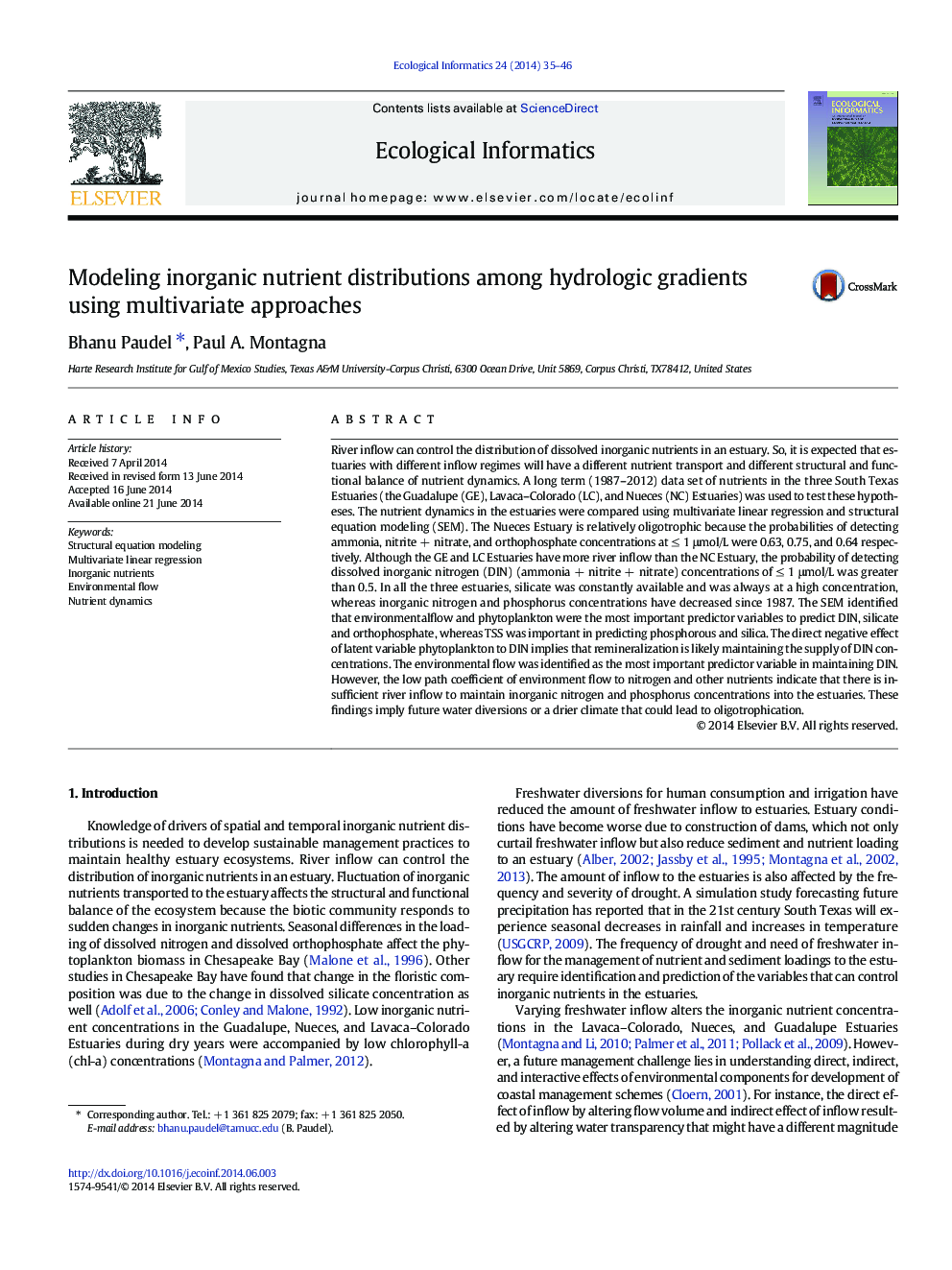| Article ID | Journal | Published Year | Pages | File Type |
|---|---|---|---|---|
| 6295883 | Ecological Informatics | 2014 | 12 Pages |
Abstract
River inflow can control the distribution of dissolved inorganic nutrients in an estuary. So, it is expected that estuaries with different inflow regimes will have a different nutrient transport and different structural and functional balance of nutrient dynamics. A long term (1987-2012) data set of nutrients in the three South Texas Estuaries (the Guadalupe (GE), Lavaca-Colorado (LC), and Nueces (NC) Estuaries) was used to test these hypotheses. The nutrient dynamics in the estuaries were compared using multivariate linear regression and structural equation modeling (SEM). The Nueces Estuary is relatively oligotrophic because the probabilities of detecting ammonia, nitrite + nitrate, and orthophosphate concentrations at â¤Â 1 μmol/L were 0.63, 0.75, and 0.64 respectively. Although the GE and LC Estuaries have more river inflow than the NC Estuary, the probability of detecting dissolved inorganic nitrogen (DIN) (ammonia + nitrite + nitrate) concentrations of â¤Â 1 μmol/L was greater than 0.5. In all the three estuaries, silicate was constantly available and was always at a high concentration, whereas inorganic nitrogen and phosphorus concentrations have decreased since 1987. The SEM identified that environmentalflow and phytoplankton were the most important predictor variables to predict DIN, silicate and orthophosphate, whereas TSS was important in predicting phosphorous and silica. The direct negative effect of latent variable phytoplankton to DIN implies that remineralization is likely maintaining the supply of DIN concentrations. The environmental flow was identified as the most important predictor variable in maintaining DIN. However, the low path coefficient of environment flow to nitrogen and other nutrients indicate that there is insufficient river inflow to maintain inorganic nitrogen and phosphorus concentrations into the estuaries. These findings imply future water diversions or a drier climate that could lead to oligotrophication.
Keywords
Related Topics
Life Sciences
Agricultural and Biological Sciences
Ecology, Evolution, Behavior and Systematics
Authors
Bhanu Paudel, Paul A. Montagna,
